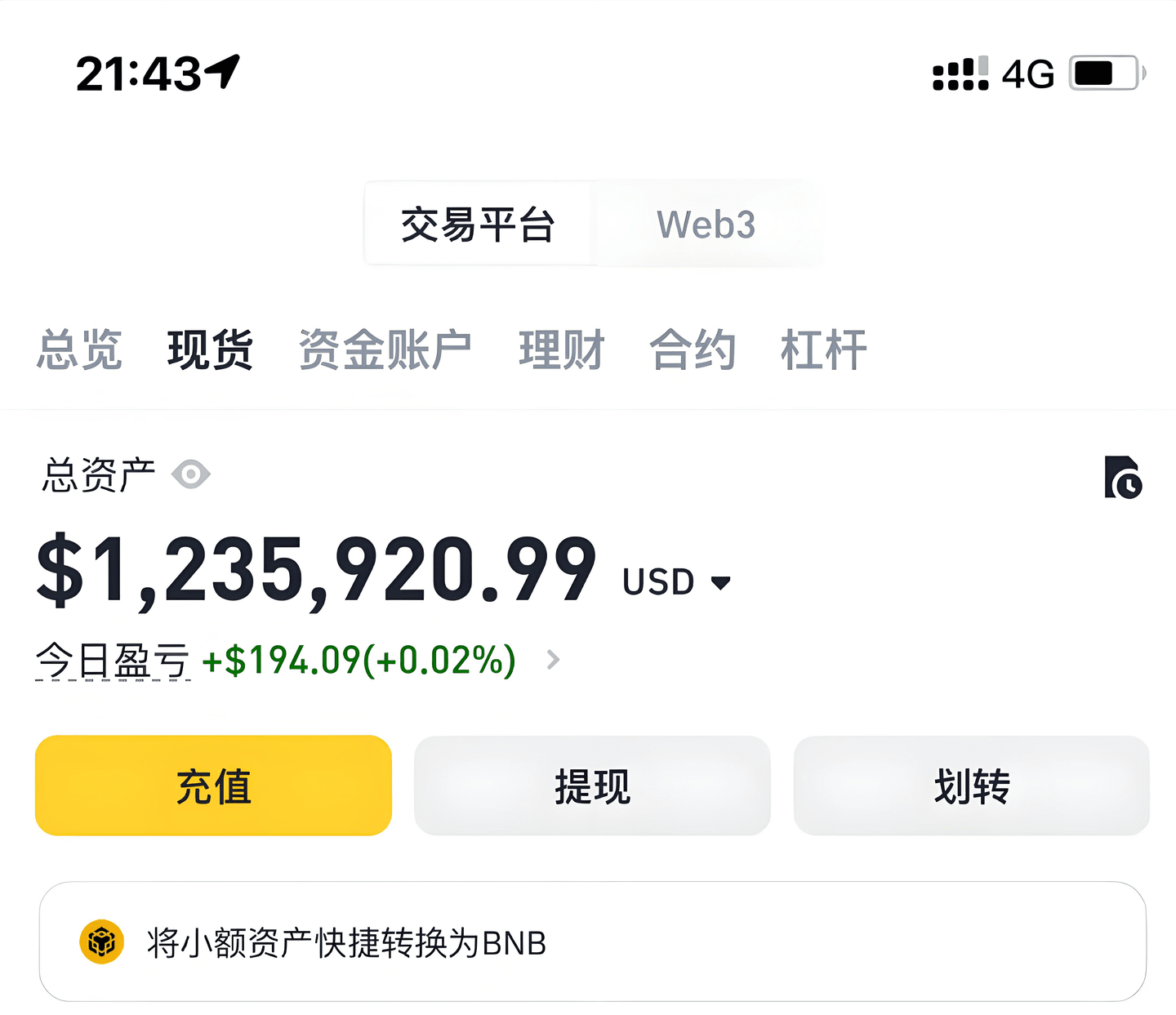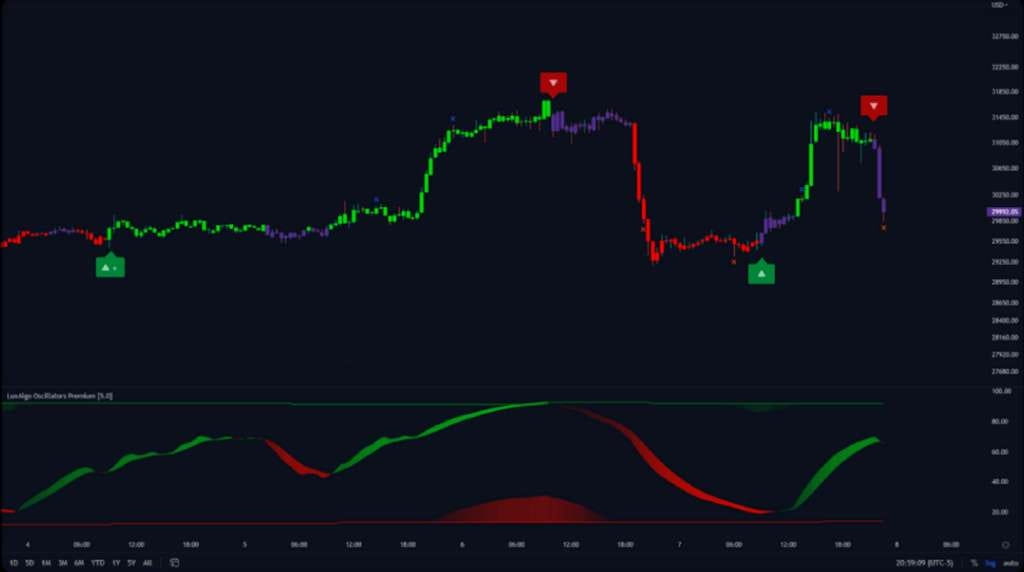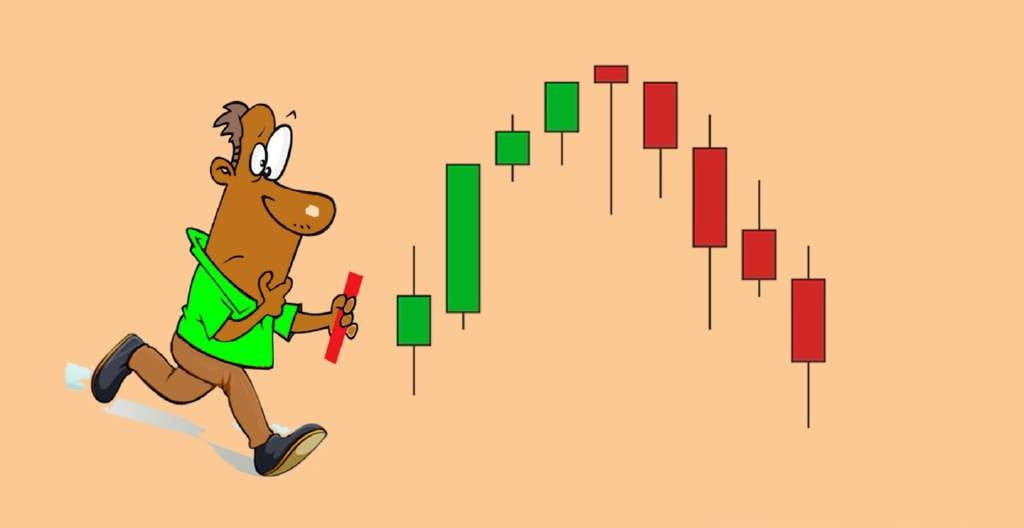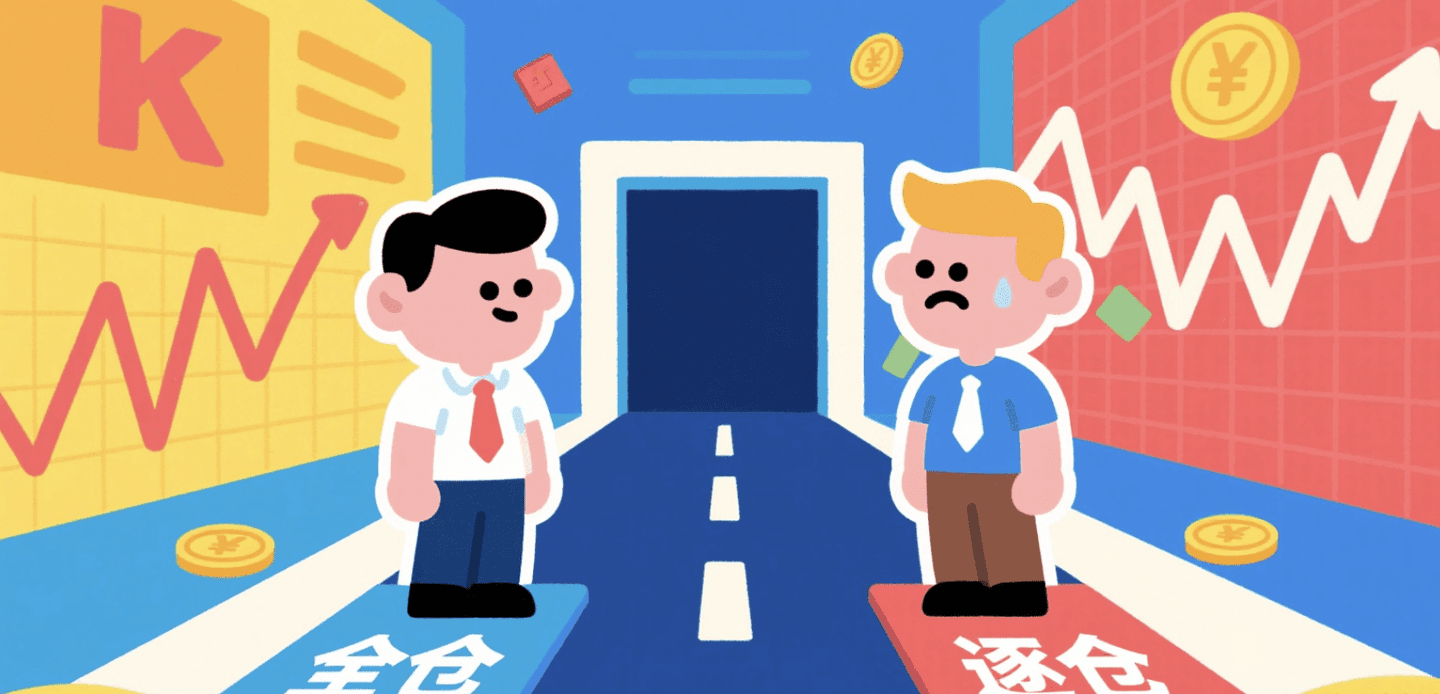Crypto contracts are scarier than gambling and more addictive than drugs! With a phone, you can trade 24 hours a day, 365 days a year, at any time and place. Is 20x leverage stimulating enough? If not, there’s also 50x leverage and 100x leverage, with desires amplified infinitely.

(Crypto world reversal strategy: from tens of thousands to 20 million, rolling positions all the way.)
Three years ago, after a contract liquidation left a friend with a debt of 20 million, he 'went into seclusion.' Now, he not only cleared his debts but also holds millions, earning an eight-figure income annually. He said that going from tens of thousands to 20 million relied on rolling positions, but you must wait for the big opportunity.
The significance of a 1 million principal is: a 20% increase in spot translates to 200,000, and being able to endure to this point means understanding the logic of making money and maintaining a calm mindset; the subsequent process is just replicating the experience. Don’t talk about making tens of millions; money has to be earned little by little.
The core of trading is to distinguish opportunities: practice during normal times, and when a big opportunity arises, use rolling positions — after leveraging profits in the trend, increase positions due to the actual leverage decrease, allowing profits to roll.
Three suitable situations for rolling positions:
- Long-term consolidation, low volatility, direction selection about to occur;
- After a big rise in a bull market, there may be a sharp drop, which can be an opportunity to buy at the bottom;
- Breaking through major weekly resistance (or breaking below major support), the trend will change.
Operational method:
- Increase position on floating profits: Buy after confirming cost declines;
- Base position + trading: part holding, part buying low and selling high, the core is to reduce costs and increase profits.
Timing for increasing positions:
- Trend breaks the convergence range, increase positions to catch the main upward trend, sell the added positions after making a profit;
- The trend retraces to the moving average, buy in batches for the next wave.
'Stupid method' (almost no loss):
1. The market crashes, and the coins you hold have smaller declines — there is institutional support, hold on;
2. Beginners look at the lines: short-term focus on the 5-day line, mid-term focus on the 20-day line, hold while above the line, run if it drops below;
3. Buy decisively when the main upward trend has not seen volume, hold if the volume increases/drops but the trend does not break, and reduce positions if the volume drops and breaks the trend;
4. After buying short-term, if there is no activity for three days or a 5% drop, sell/stop loss in time;
5. If the coin drops 50% from a high and falls for 8 consecutive days — oversold, or a rebound may occur;
6. Buy leading coins, dare to 'buy high, sell higher';
7. Follow the trend, buy at a 'reasonable' price, don’t guess the bottom, timely abandon weak coins;
8. Don’t be floaty; focus on continuous profits, build a stable trading system;
9. If you're unsure, stay in cash; prioritize preserving capital before making money, focusing on success rate rather than frequency.
Long-term trend 'wealth code':
- Halving cycle: Buy BTC, BCH, etc., 180 days before halving, hold until 30 days after halving;
- Leading stocks catching up: find the second tier that has risen less in the same sector;
- Three technical validations: Weekly MACD golden cross + daily breakout + hourly volume surge;
- Institutional positions: Large address increases + chain transaction volume surges;
- Bear market regular investment: Invest 10% of the principal monthly in blue chips for 12 months, with returns possibly over 300%.
Risk warning: Beginners should use demo accounts to test, with single losses not exceeding 2% of total funds.
Key foundation: Maintain a balanced life. If you don't handle life issues well, trading can become chaotic. Organize your life to trade calmly.
Beginners shouldn't just focus on buying and selling; correct procedures are a hundred times more important than skills. Think, trade, and live like a successful person!

Three tips for beginners to avoid pitfalls in contracts: Refuse gambler mindset, rely on discipline for steady profits.
Tip #1: Treat contracts like flipping a coin — clearly understand the rules before placing a bet.
1. Underlying logic
Going long = betting on the positive (up), going short = betting on the negative (down); only when the direction is correct can profits be made.
Leverage is not magic, but a magnifier: 10x leverage = turning a 1 yuan coin into a 10 yuan chip; guess right and earn 10 times, guess wrong and lose 10 times.
2. Key operational points
Before placing an order, ask these three questions (within 3 seconds): ① Is the current trend upward or downward? ② Are there any significant news that might interfere? ③ Where is the stop-loss point set?
Use the 5-minute chart to find 'secondary confirmation' signals, such as a pullback to support after a breakout, before deciding whether to enter.
Tip #2: Use strategies instead of random guesses — let the system earn money automatically.
1. Grid trading
Applicable scenario: Fluctuating market (e.g., BTC fluctuating between 60k–65k for 3 days).
Operational setup: Set a grid every 500U, automatically buy low and sell high, running 24 hours a day.
Return reference: Fluctuating range 5% + 3x leverage, single grid net profit margin 15%, daily average return about 3%-5%.
2. Funding fee arbitrage
Core principle: When the funding fee for contracts is higher than the interest for spot holdings, go long on the spot + short on perpetual contracts to lock in a risk-free spread.
Case reference: a certain coin's funding fee annualized at 18%, spot annualized at 2%, interest spread of 16%, with a principal of 100,000U earning a guaranteed 16,000U in a year.
3. Hedging trade
Applicable scenario: The night before significant events (like policy conferences or data releases), with unknown volatility direction.
Operational method: simultaneously open equivalent long and short positions, close the losing position after fluctuations, and keep the profitable position to achieve 'earning from both rising and falling.'
Tip #3: Treat risk control as a lifeline — first learn not to lose, then talk about making money.
1. Position management
Pyramid positioning: First position 1%, add 0.5% after 2% profit, total position never exceeds 3%.
Inverse pyramid position reduction: Reduce 1% position at 1% loss, reduce 2% position at 2% loss; strictly prevent liquidation.
2. Stop-loss discipline
Fixed stop-loss: Set a 2%-3% stop-loss line when opening a position; the price triggers automatic liquidation.
Move stop-loss: after achieving 5% profit, move the stop-loss to the cost price to firmly lock in profits.
3. Emotional management
After three consecutive losing trades → enforce a 24-hour stop, avoiding 'revenge trading.'
Establish a 'trading journal': record the reasons for each position, profit and loss results, and emotional state at the time, using data to correct impulsive operations.
4. Capital planning
Strictly separate living expenses: at least reserve 12 months of daily expenses to ensure that even if liquidation occurs, basic life is not affected.
Indicator assistance: MACD, KDJ are only for reference; the core judgment basis is trend + volume + real-time news.
Conclusion
Contracts are not a casino, but a long-term battle of cognition and discipline.
It is recommended to first use 1% of funds to complete 100 practice trades in a demo account before entering the live market;
First, make 'not losing money' a reflex, and then let 'making money' happen naturally.
Making 1 million in the crypto world, 'either rely on a bull market + hold on, or rely on betting on a wealth coin, or rely on high leverage to bet in the right direction.' But most people are losing money, so don't just look at wealth stories; first, think about how much risk you can bear.
If you are also a tech enthusiast in the crypto world, click on the coin homepage.
Click on the profile picture to follow me for firsthand information and in-depth analysis!

How I built a stable profit system in the crypto world using the 'Pyramid Model'! Just six simple steps.
Without further ado, let’s get straight to the point!
With over ten years in crypto trading, I have established a complete trading pyramid model to help anyone who wants to continuously and steadily profit as a trader to create a complete guide; the way to take trading performance a step further is to turn a good trading mindset into a habit.
To achieve successful trading, you need to go through six steps. We can refer to these six steps as the six cornerstones of successful trading. They are: choosing a focus point, determining your trading style, using correct trading operations, controlling position size, internalizing profitable operation patterns into a habit, and self-control.
Successful trading step #1 Focus Point
For traders, the focus point is one of the most powerful weapons in your trading arsenal. It determines how you view the market. More importantly, it decides what you will ignore. In any market where a vast amount of information is generated, you need to ignore most of it. For some traders, their focus point might be reading various financial news; for others, it might be weekly discussions with their brokers; for some, the focus might be checking technical charts; or you might have purchased a short-term trading system, in which case your focus would be to follow its operational rules.
You will immediately understand that approaching from these different perspectives will reveal vastly different market appearances. Those who read articles written by stock analysts or analysts will have completely different perceptions and views of the market compared to someone trading according to a particular short-term trading system. There will be differences in several aspects:
Time frame — which can vary from a few minutes to several months or years. Market — markets are divided into stock markets, futures markets, commodity markets, and various contract markets. Each type of market has different risks and opportunities. Goals — some traders want to achieve long-term gains and dividends, while others seek short-term trading profits, with many traders falling somewhere in between.
Even if you are similar to others in these three aspects, other traders may still profit from the market in ways that differ greatly from yours. For example, one of my colleagues focuses on capturing profits from market gaps, while I prefer trading during rapid price surges and drops; others may use candlestick charts or moving averages... such differences are truly endless.
You also need to consider money management issues, but the trading system itself has noted risk control. Since your focus point is very strictly defined, the entire trading process will thus be much simpler.
Successful trading step #2: Determine trading style
So-called talent is essentially the 'trading style' that matches you. There are many different trading methods in the market; even if you have identified your focus point, there will still be many trading methods based on that focus.
For example, your focus point may be on hedging market target prices. Based on that focus, you might trade during the price fluctuations towards the target price after the market opens. However, some traders may adopt a more relaxed trading style, simply placing a limit order at or near the target price, along with a suitable stop-loss point, and then go play golf.
Another trader might adopt a more aggressive trading style. He might carefully observe the price fluctuations at the opening and quickly exit the trade if he did not choose the right direction, and if he did, he would quickly move the stop-loss point to lock in profits. In these two cases, the focus points are completely the same, or very similar, but the trading styles are vastly different. Which trading style is better?
Your trading style will also depend on your personality and psychology. Or it can be said: your trading style is a comprehensive manifestation of your talent, personality, core values, and beliefs.

Successful trading step #3: Use the correct trading operations.
The concept of 'correct trading operations' is very simple and clear, but it also includes two different aspects. Your focus point must provide you with some advantage, that is, it can bring expected profits over a long period. You must trade correctly to realize your advantage.
The first aspect involves the essence of professional traders, meaning you need to carefully examine your focus point to ensure it truly can generate profits. You are responsible for how you trade, and you need to scrutinize to ensure your methods can make you money. The second aspect is to achieve a positive expectation of your trading methods through excellent trading. Once you are doing this and have confidence in continuing, you can prepare to move to the next step…
Successful trading step #4: Control position size
When you truly start participating in trading, you will encounter the issue of position size. The following key points are very important.
You have already identified your focus point. You have become an expert in your focused area and formed your own trading style. You have carefully examined all components of your trading operations in the market and know that you possess certain advantages. You have demonstrated this advantage in real-time trading. You understand the key concepts of money management (in a sense, money management is also part of your trading style).
After all these factors are met, as a trader, if you hope to earn a considerable amount of money, you must increase the size of your trading position. As you improve, and if you trade correctly, your account funds will continue to grow, allowing you to continue increasing your trading position.
You need to consider money management. In the simplest terms, this means avoiding taking on too much risk in any trade. My recommendation is to set the risk for each trade between 2%-4%. This means if you have a total trading capital of £10,000, you can only risk £200-£400 in each trade. Generally, it's better to take less risk than more.
This risk factor seems a bit low, but you need to realize that losses can occur at any time, and you must be able to cope with these losses while avoiding significant capital erosion.
For example, if your trading method yields a 50% win rate and a 50% loss rate (this performance is quite mediocre, and your win rate must average higher than your loss rate to provide that critically needed advantage), statistically, you might encounter consecutive losses in 1000 trades. Unless someone is very familiar with statistics, no one would expect such a high number of consecutive losses. If you're risking 10% on each trade, you might get eliminated.
Additionally, please keep in mind that if you let your account funds shrink by half, you must double your profits (achieve 100% profit) to just return to the original starting account level. This achievement is not easy to achieve, so it’s best to avoid letting your account funds shrink by half right from the start. By taking risks of 2%-4% each time (which can fluctuate based on your total funds), you can minimize the impacts caused by inevitable losses, and when you encounter 11 consecutive profitable trades (from a statistical perspective, this is also possible, but no one would complain about having too many), you can still seize opportunities to profit.
Thus, trading psychology will once again be brought into your risk management. If you are someone who enjoys taking high risks and likes the state of excitement, you should pay extra attention to yourself, and be careful not to overlook the advice I provided earlier due to these psychological tendencies.
Money can trigger many psychological issues; however, if you want to turn your trading into a business, you must handle these issues properly. In a competitive environment, if you are an emotional, poorly performing loser, it may negatively impact your ability to handle financial losses, which are inevitable during trading. When you continuously treat trading as a business, you will naturally begin to profit.

Successful trading step #5: Internalize profitable operation patterns into a part of your habits.
As humans, most of our behaviors are merely habits. Some of us have developed profitable habits and become wealthy and successful; while most, for various reasons, have developed habits that lead to failure, turning life into a difficult struggle.
In such situations, it is often necessary to properly address human herd mentality issues: just go to a local bar, football field, or rock concert, and you'll understand how much we humans love to be part of a group.
Successful people are often those who enjoy going it alone and stand out. They are also those who possess a very positive mindset towards success. They see success, wealth, and successful people as goals worth pursuing or as inspiring examples.
If you want to profit, you must avoid doing so, and it’s best to adopt the methods proposed in this article. These methods are fundamentally very simple. If you keep doing them, they will become effective and guide you to success (these habits are in stark contrast to the destructive habits that most traders commonly develop).
We are all prone to developing bad habits, and these bad habits need to be eradicated. This is easier said than done. Take myself as an example: in November 2012, I felt I was drinking too much, so I decided to abstain from alcohol for a year. I found it easy to do and thought I had successfully guided myself. In any case, not drinking for a year was not a big deal. However, I worried that if I started drinking again in November 2013, I might immediately fall back into old habits. However, I was pleasantly surprised to find that I could control my drinking amount very well. I am not saying bad habits won't resurface, but for me now, I have eliminated old bad habits and am happy to maintain new good habits.
Remember, the formation of a habit is achieved by repeatedly performing the same behavior. Unfortunately, your subconscious does not know or care whether the habits formed are good or bad. In terms of your trading, you need to identify the bad habits you have formed and find ways to eliminate them. This is still 'easier said than done.' Remember: many of our habits play a positive role in our daily lives, so most habits are extremely useful!
Unfortunately, in many cases, our many habits unknowingly undermine our own efforts in seeking success. When we start seeking peak performance in a certain area, we all need to change those less beneficial habits to achieve success.
Successful trading step #6: Cultivate your self-control.
Finally, let me add one more point, which I call the sixth cornerstone: self-control. Unless you clearly decide what you want and take action, you cannot become a successful professional trader.
Of course, as you actively increase your capital size and learn to cope with new challenges at each stage, there are more things to improve than just these. During this process, the unique relationship between you and money may be a key factor.
The six-step method outlined earlier can be well applied in various aspects of trading or life if appropriately modified according to actual needs.

Many people engage in contracts, but when asked 'use full margin or incremental margin,' many people are confused. What's worse is that some don’t even understand the difference between the two but dare to open positions with leverage, ultimately getting liquidated without knowing where the problem lies.
Today, let’s not pile on the jargon; let's clarify these two models. Decide how to choose after reading, and you’ll be clearer in your mind.
Let's first talk about incremental margin:
Simply put, incremental positions mean 'how much you invest is how much you can lose at most.'
For example, if you have 5000U in your account and only invest 500U in this trade, then even if the market goes completely against you, you will only lose that 500U at most, without affecting the entire account.
Who is it suitable for? Suitable for those who want to control risk and prefer a steady approach.
Each trade is like a separate battle; even if this battle doesn't go well, it won't affect the overall situation, and the safety of the principal can be maintained.
Now let's look at full margin:
The logic of full margin is that if this trade fails, the remaining money in the account will also 'go down with the ship.'
The system will automatically use the spare money in the account to 'extend the life' of the current position until the entire account cannot sustain it and is cleared at once.
It sounds like 'high tolerance,' but the risk is actually greater.
Many people feel they can 'withstand' when using full margin, but when a major fluctuation occurs, they often get wiped out. Especially those who like to hold on without setting stop losses, full margin is basically a ticking time bomb.
So how to choose?
If you are still familiarizing yourself with the market or have just come into contact with contracts, prioritize using incremental margin — this is the most direct way to protect your principal.
Once you have a mature trading system that can strictly enforce risk control, consider using full margin to enhance capital efficiency. But even so, stop losses must be set, and you cannot be careless.
Ultimately, the essence of contracts is not to make quick money, but to allow you to last longer and walk more steadily in the market.
Don't treat your account like a casino; placing heavy bets without knowing where the risks come from is not trading, it's gambling.
Full margin and incremental margin are not about which is superior; it's about whether you have the ability to manage them.
In this round of the market, whether you can stabilize and recover, and seize opportunities, is key to yourself. Clarifying ideas and laying out plans early can help you recover from the lows faster.
Making 1 million in the crypto world, 'either rely on a bull market + hold on, or rely on betting on a wealth coin, or rely on high leverage to bet in the right direction.' But most people are losing money, so don't just look at wealth stories; first, think about how much risk you can bear.
If you are also a tech enthusiast in the crypto world, click on the coin homepage.
Click on the profile picture to follow me for firsthand information and in-depth analysis!



